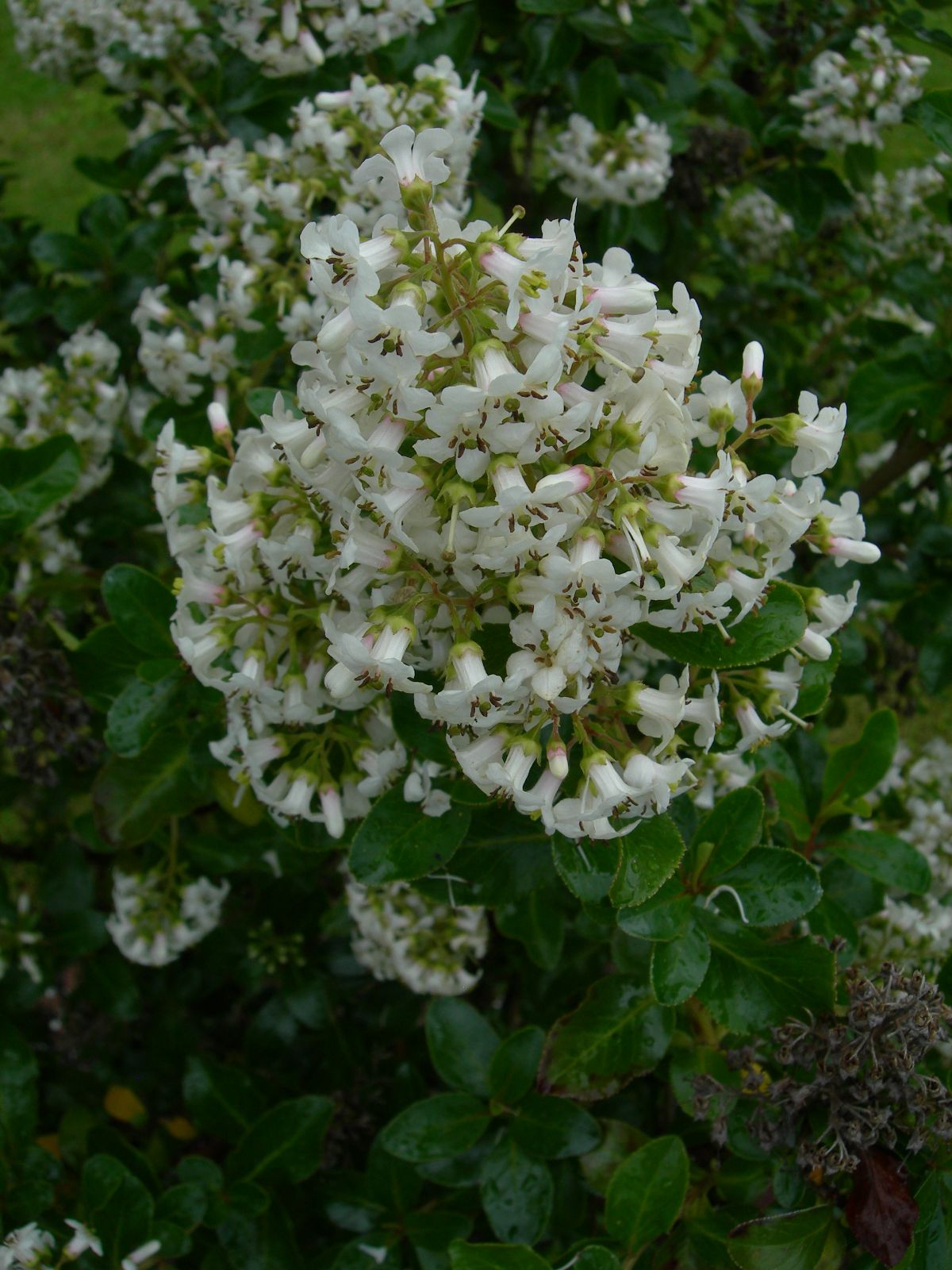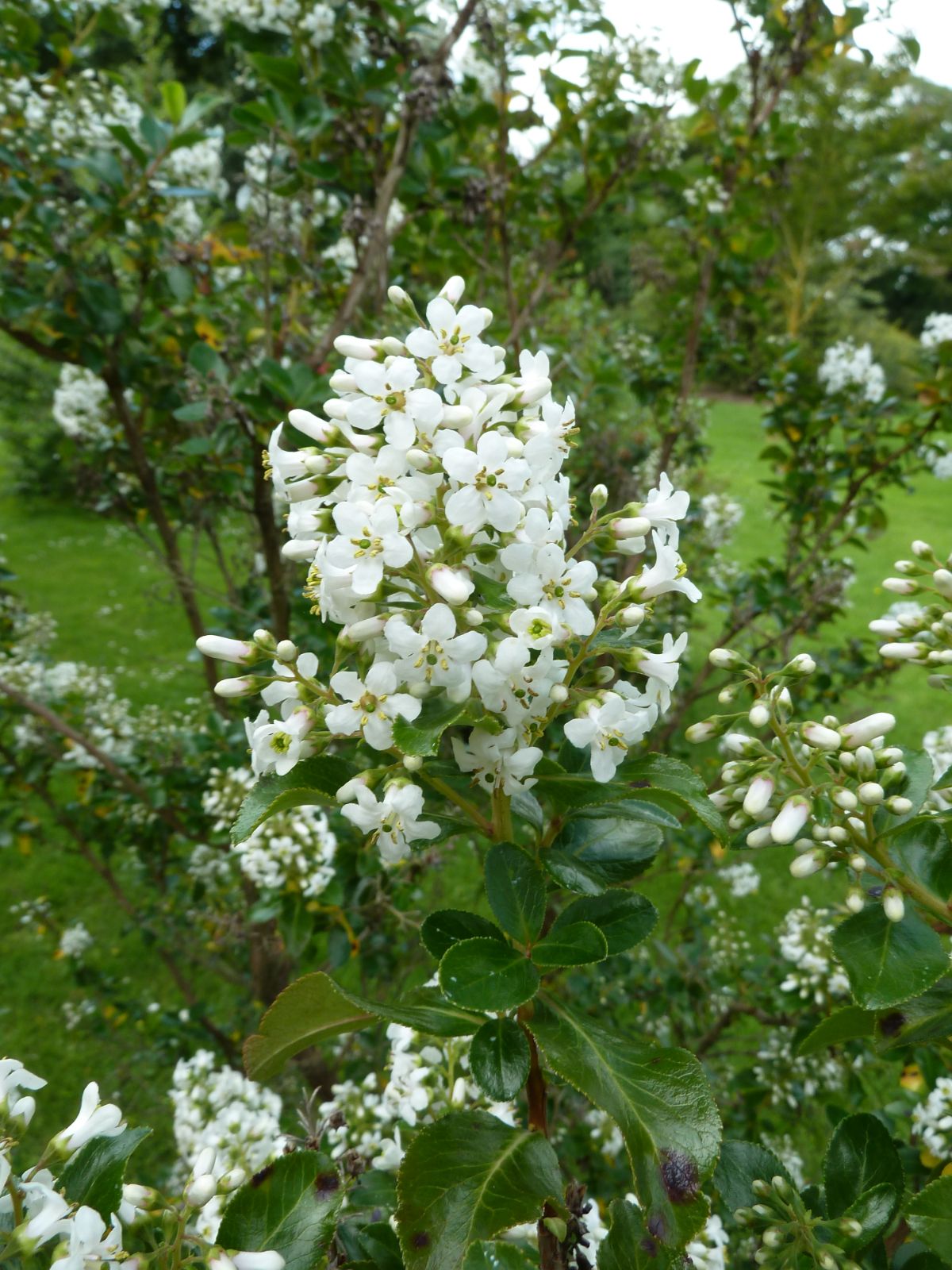Escallonia 'Iveyi'
Credits
Article from Bean's Trees and Shrubs Hardy in the British Isles
Recommended citation
'Escallonia 'Iveyi'' from the website Trees and Shrubs Online (treesandshrubsonline.
Genus
Other taxa in genus
- Escallonia alpina
- Escallonia bifida
- Escallonia × exoniensis
- Escallonia illinita
- Escallonia laevis
- Escallonia 'Langleyensis'
- Escallonia leucantha
- Escallonia macrantha
- Escallonia montevidensis
- Escallonia organensis
- Escallonia pterocladon
- Escallonia pulverulenta
- Escallonia revoluta
- Escallonia rosea
- Escallonia rubra
- Escallonia tucumanensis
- Escallonia virgata
Originally found at Caerhays Castle at the foot of plants of E. bifida and E. × exoniensis growing together, this evergreen shrub is assumed to be a hybrid between them, the cross fertilisation having been done by a bee or other insect. It was noticed first by Mr Ivey, a gardener at Caerhays. As a garden shrub it is one of the finest of escallonias. The young shoots are angled and furnished with scattered dark hairs. Leaves mostly oval, tapered at the base, rounded at the apex, finely toothed, 1 to 23⁄4 in. long, 3⁄4 to 11⁄2 in. wide, quite glabrous and of a glittering dark green above, paler and lustrous beneath; stalk 1⁄8 to 1⁄4 in. long. The flowers are white, 1⁄2 in. across, with the terminal part of each petal rounded and recurved; they are produced during late summer and autumn in terminal pyramidal panicles 5 to 6 in. high and about 4 in. wide at the base.
Quite hardy in the south-west, this escallonia has been grown on a west wall at Kew for many years, and although slightly injured in severe winters can be counted as hardy there. Even away from a wall it survived the winters of 1961–3 in many gardens in southern England. Its very dark green, burnished leaves, vigorous growth and fine panicles of white flowers opening in July and August make it one of the finest evergreens.


